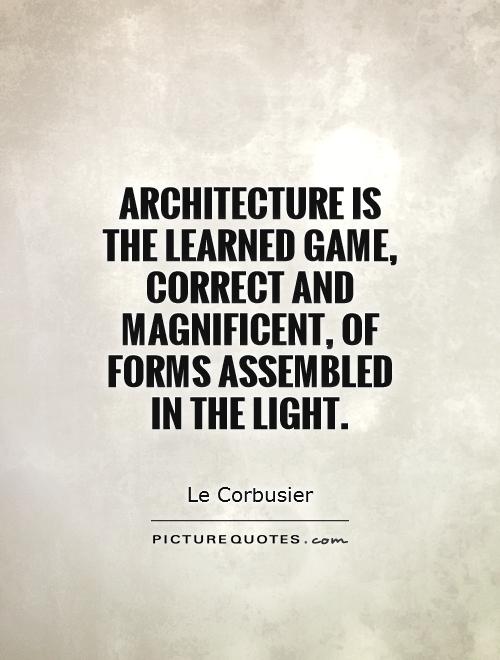Architecture is the learned game, correct and magnificent, of forms assembled in the light

Architecture is the learned game, correct and magnificent, of forms assembled in the light
Le Corbusier, the renowned Swiss-French architect, designer, and urban planner, is often considered one of the most influential figures in the history of modern architecture. His words, "Architecture is the learned game, correct and magnificent, of forms assembled in the light," encapsulate his philosophy and approach to architecture.For Le Corbusier, architecture was not just about creating buildings; it was about creating spaces that were harmonious, functional, and beautiful. He believed that architecture was a form of art that required a deep understanding of form, light, and space. In his view, the architect was like a master chess player, carefully arranging forms and spaces to create a cohesive and visually striking composition.
The idea of architecture as a "learned game" reflects Le Corbusier's belief in the importance of education and training in the field of architecture. He was a strong advocate for the study of architectural history, theory, and practice, and believed that architects should be well-versed in a wide range of disciplines, from engineering to art to philosophy. By mastering these various fields, architects could create buildings that were not only aesthetically pleasing but also structurally sound and functional.
The notion of architecture as "correct and magnificent" speaks to Le Corbusier's commitment to precision and excellence in his work. He believed that every detail of a building should be carefully considered and executed, from the overall design down to the smallest finishing touches. His buildings were known for their clean lines, geometric forms, and innovative use of materials, all of which contributed to their timeless beauty and functionality.
The idea of forms being "assembled in the light" highlights the importance of natural light in architecture. Le Corbusier was a master at using light to enhance the spatial qualities of his buildings, creating dynamic interplays of light and shadow that added depth and drama to his designs. By carefully considering the way light interacted with his forms, Le Corbusier was able to create buildings that were not only visually stunning but also emotionally evocative.












 Friendship Quotes
Friendship Quotes Love Quotes
Love Quotes Life Quotes
Life Quotes Funny Quotes
Funny Quotes Motivational Quotes
Motivational Quotes Inspirational Quotes
Inspirational Quotes